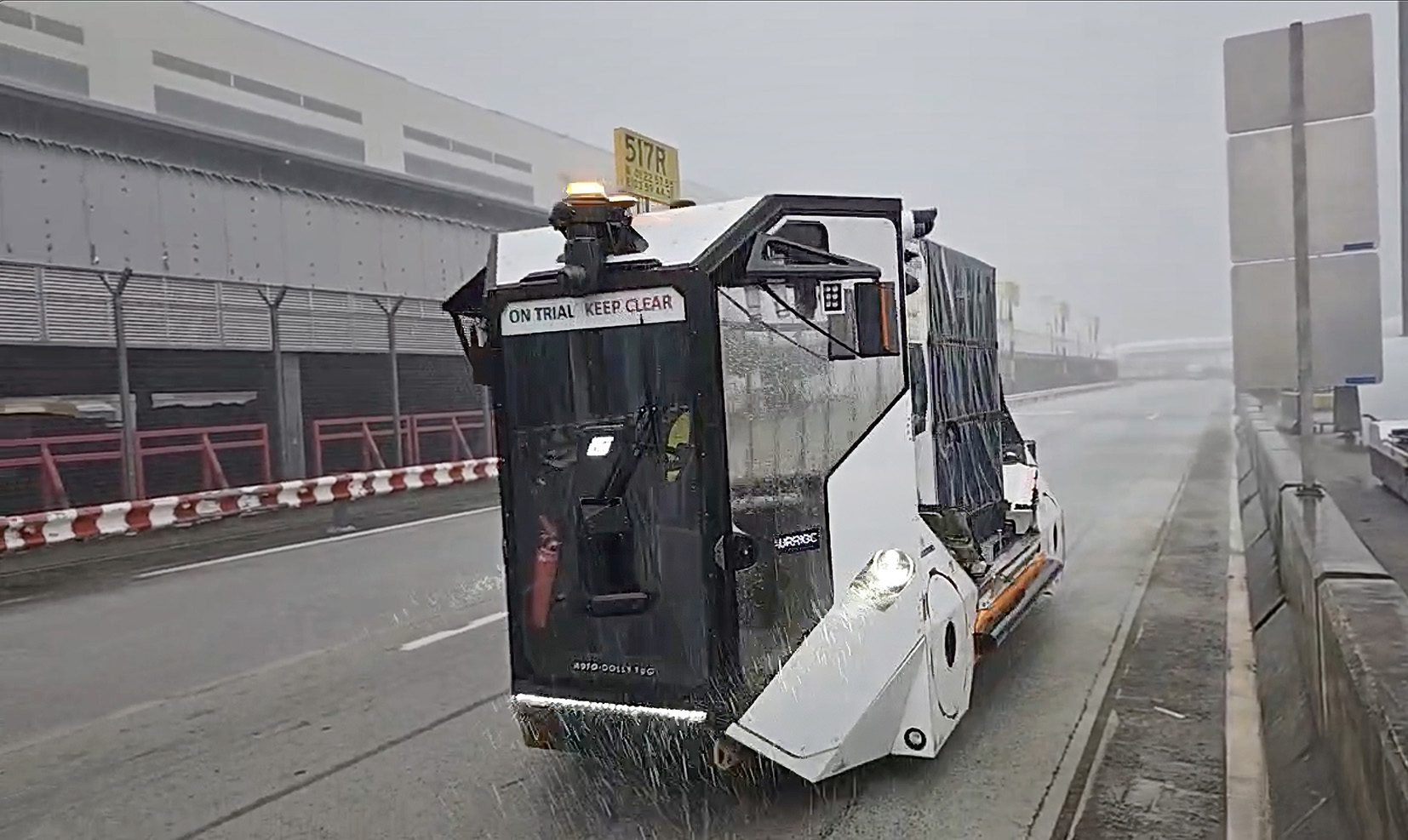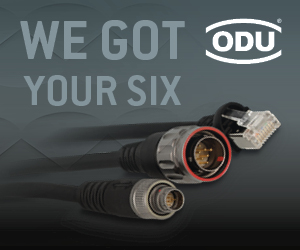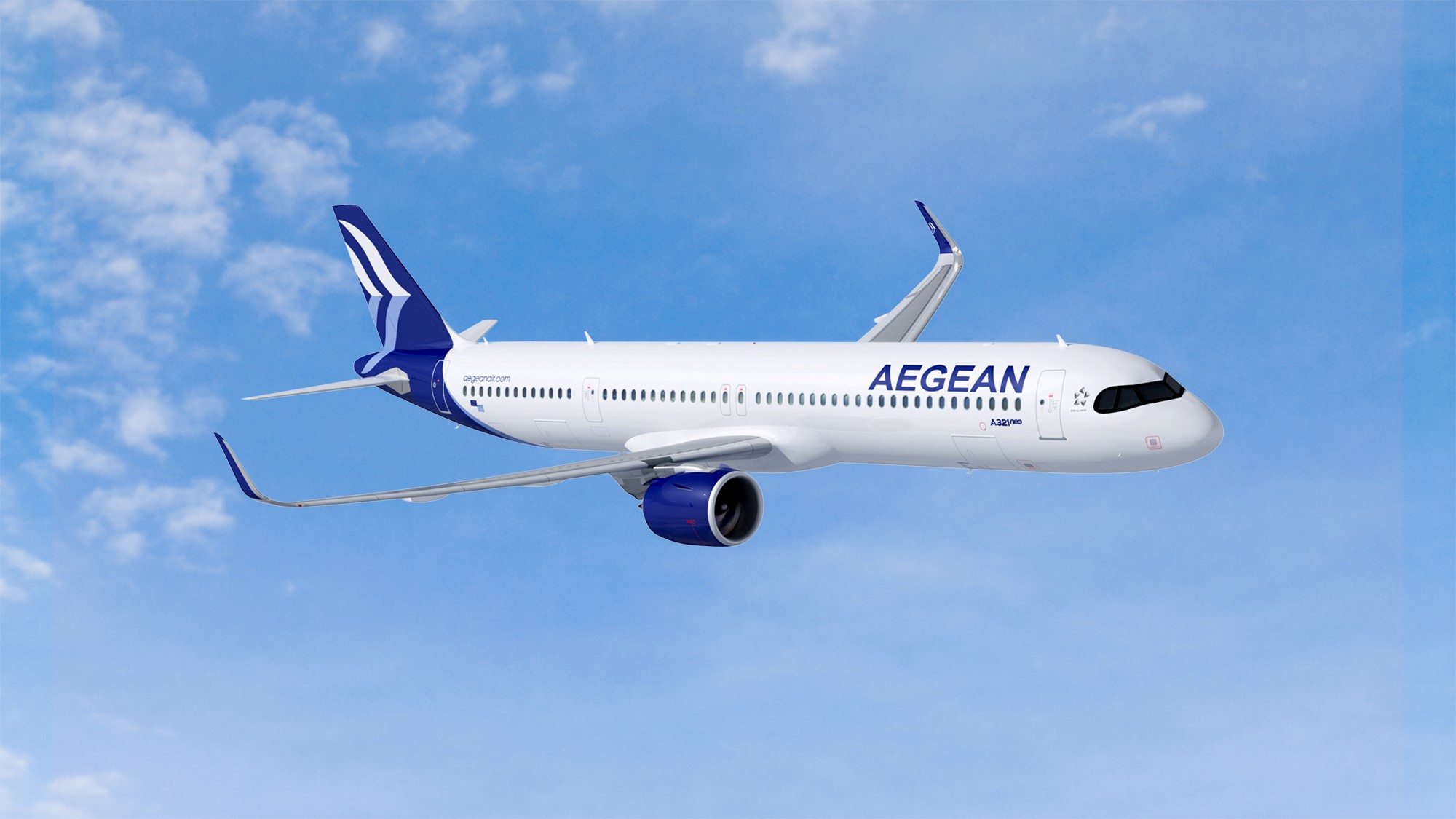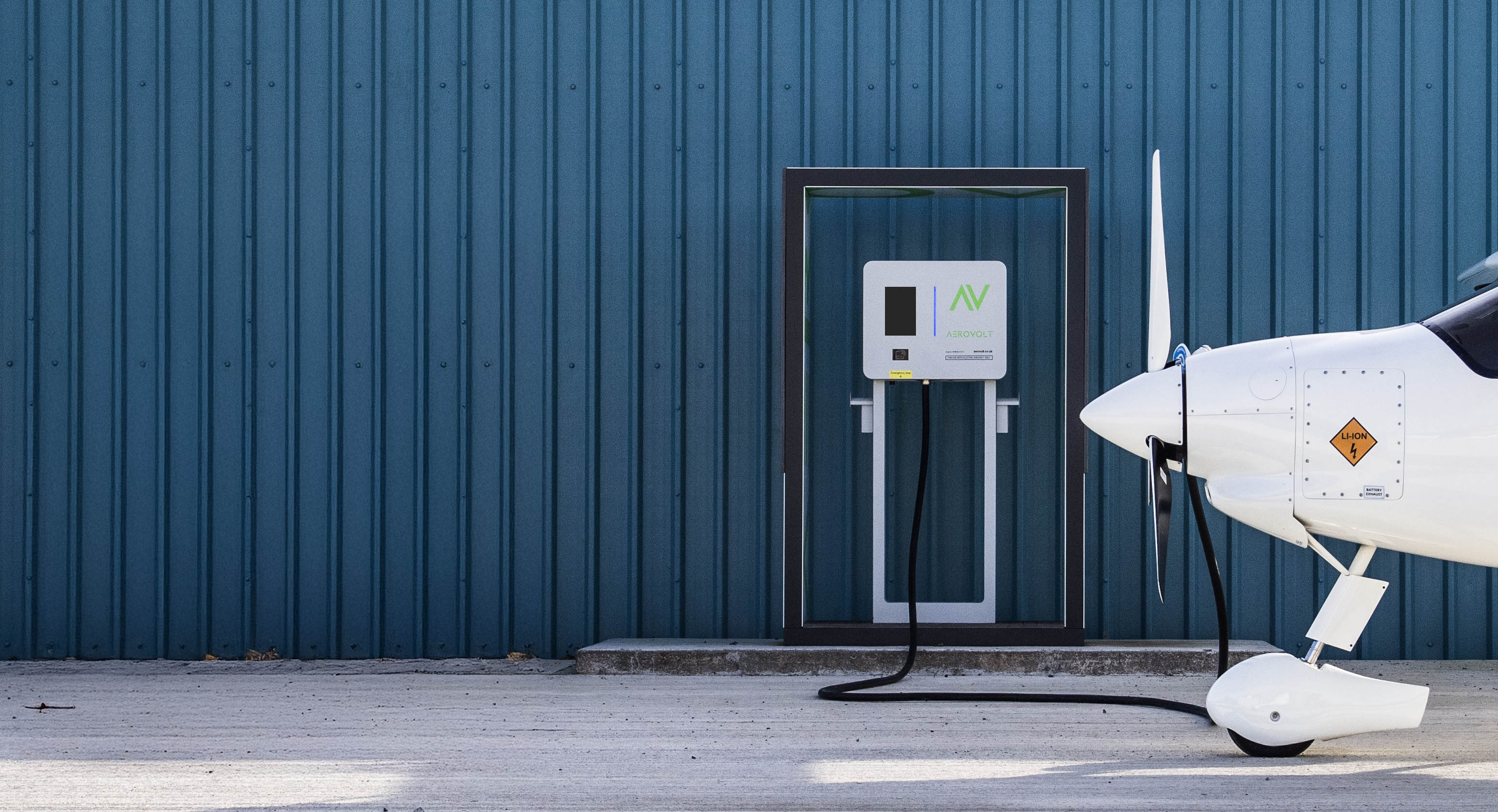Autonomous vehicles pass intense weather tests

Image courtesy Aurrigo International
The specialist in smart airside solutions has developed a new rainfall algorithm that will help it detect the difference between drops of rain and objects whilst operating in up to 50mm of precipitation per hour.
Alongside new housing to better protect LiDAR sensors, the software breakthrough means the firm’s Auto-DollyTug can safely and effectively move baggage and cargo around airports in intense conditions that previously would have prevented manual operation.
This has been successfully tested in both scheduled simulated rain and opportunistic heavy rainfall, both proved by observation and by rain meter readings.
Simon Brewerton, Chief Technical Officer at Aurrigo International plc, said: “Traditionally, very heavy rain has presented a significant problem for autonomous vehicles, particularly for LiDAR detection and navigation.
“AVs using this technology rely on the reflection feedback of laser beams for localisation and object recognition and, in intense weather, the scattering and absorption of laser beams by raindrops can lead to distorted signals, compromising the vehicle's ability to accurately perceive its surroundings.
“The first stage of the solution was to design the latest Auto-DollyTug with better casing protection for the LiDARs, which we duly did. However, the big ‘Eureka’ moment for us and the sector is the algorithm we have trained to strike a balance between the removal of raindrops and retaining the ability to detect real obstacles.
“This means that airlines and airport operators have complete confidence that, even in extreme rain conditions, our autonomous dollies will operate efficiently.”
At the heart of the software are two key features. First, Aurrigo International’s technical team has ensured that the filtering of the rain is split into five spatial zones around the vehicle, the strength of the filtering varying based on proximity.
Second, due to differences in the scan properties between the unfiltered and filtered scans, low-lying obstacles and reflective surfaces were not naturally detected and this had to be built into the software, leading to the adjustment of field height settings and ‘near field’ low profiles being added.
Sam Layton, Regional VP Singapore at Aurrigo International, said: “The tests we did at a leading international airport had to prove the Auto-DollyTug could operate autonomously with no ghost or intermittent stops, react to a box and person injected into the vehicle’s path and safely navigate a T-junction airside with oncoming traffic left and right.
“All of this had to be achieved under 15mm of rainfall per the customer's requirement, which we successfully passed. Since then, we have increased our capabilities and operated airside on live trials with rainfall of 50mm per hour. This is a real game-changing moment for autonomous vehicles and aviation.”
Manual operations must cease during a CAT5 lightning risk, which occurs incredibly frequently in places like Singapore due to the rainforest climate and inclement weather.
This is due to the electrocution risk to humans but this is not a concern for autonomous vehicles, meaning there is huge potential to build a fully autonomous aircraft turnaround - piece by piece - to enable autonomous operation even in the worst weather conditions.
Sam went on to add: “Automated equipment will be needed for baggage and cargo servicing, catering, water and refuelling. Our vehicles - Auto-DollyTug and Auto-Cargo - unlock the ULD and cargo pallet servicing pieces of that puzzle respectively.
“Our enhancement, together with other advanced systems, mean flight schedules will be maintained whilst reducing risk of injury to airside workers, two key priorities for airlines, and airport and ground support operators.”
Aurrigo International, which is pioneering the iGSE (intelligent Ground Support Equipment) concept, has recently raised £5.25 million for the scale-up of its Auto-DollyTugs to meet global demand.
The all-electric autonomous baggage and cargo vehicle is transforming baggage and cargo handling operations at airports through improved safety, operational efficiency and reduced carbon emissions.
The funding injection will provide the platform to have 22 tugs in operation in 2025, potentially accelerate commercial sales timelines and enable the ‘go live’ moment with Auto-Cargo in partnership with UPS.
There will also be four live Auto-Sim contracts at international airports in the same period, which will help new and existing clients build digital twins of activity so they can optimise performance.













